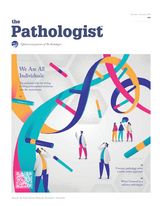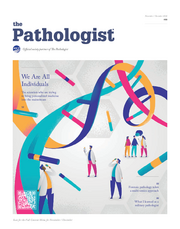Foreseeing a Delectable Land
Open minds and eyes are the requirements for the future of pathology.
“I need it fast, cheap, and right!” Pathologists get a lot of this, and we usually respond, “two out of three ain’t bad.” as the song goes. But, with Health Information Technology (HIT), including lab systems – “money for nothing” hits closer to the mark.
In the USA, we spend US$4 trillion annually on healthcare with dubious quality return on investment, and widespread HIT adoption brought about by government incentives has not improved on the 1,000 hospital deaths annually due to preventable error. This has saddled hospitals with technical debt, poor usability and interoperability, and poor productivity due to shortcomings of legacy HIT. And, even if hospitals had the funds to change, no comprehensive solutions exist that can offer significant improvement.
Hospitals are facing challenges on three fronts: first, the onslaught of data from the “Internet of Things” (IoT), genomics, and digital imaging; second, the entry of large retail business and enterprising startups into primary care; and third, the transition from fee-for service to value-based pay and coordinated care models. The first pushes legacy HIT past the breaking point; the second and third will require hospitals to demonstrate quality and customer satisfaction at low cost. This is because hospitals and specialists will become “suppliers” to companies controlling primary care that seek to use technology and innovative business plans to “Uberize” healthcare (by combining real-time data, mobile payments, instant fulfilment and dynamic pricing). This is also beyond current enterprise HIT capabilities. At the same time hospitals are taking a major productivity hit for their increasingly employed physician base and lose good physicians to EHR-induced burnout.
To remain relevant, hospitals, clinics, and enterprise HIT companies must embrace the same mobile technologies and apps that are driving the disruption of primary care. According to McKinsey, a global consulting group, the next decade will see US $78 trillion in global economic impact from these technologies, greater than all other economic sectors combined. The “disrupters” are well aware of this and their sights are set on a remarkably inefficient US $4 trillion industry that they believe they can make fast, cheap, and right.
Companies like Amazon and Netflix have solved their own versions of this problem using mobile technologies and related “microservices” architecture to replace the weak links in their monolithic enterprise systems gradually with small, agile, focused apps and modules using free or almost free, widely supported Web technologies. One of the key shifts is away from point-to-point interfaces to open web application programming interfaces (APIs) and the use of standards to ensure semantic and functional interoperability. Layered atop legacy HIT, these fix the pain points, make HIT more agile and responsive to customer needs, and decrease enterprise HIT risk, and lower costs. Such systems also offer the potential to improve the poor data quality of most HIT systems, which rely on unsustainable medical coding systems.
So, why are developments like Amazon and Netflix important? The answer is that open APIs merit additional focus because they leverage content and data, which is particularly important in healthcare. Outsiders will freely improve an enterprise’s products by improving or adding apps using its APIs for mutual benefit – like a modern-day version of Tom Sawyer’s friends whitewashing his fence. App stores like Apple’s discovered this long ago!
These technologies also allow end users to create and customize their own workflows with little or no programming. Just as you can use WordPress to create a professional web site very inexpensively without programming, this means doctors and other healthcare workers can quickly and easily adapt HIT to their workflows, rather than the opposite situation that now exists. And, since these are, after all, Internet technologies, they are built for interoperability. Healthcare can follow this path too, whereas wholesale replacement of legacy HIT is not feasible; and, fortunately, it is not necessary.
This combination of ability to crowdsource, manage and distribute content, and communicate are wonderful opportunities for hospitals and HIT companies, which are showing early movement in this direction by embracing Apple’s HealthKit, HL7 FHIR (a web health exchange standard), and others. As patients use these tools to engage and collaborate on their care, a mass market of new health services will become available to them.
What does that mean for pathologists? It means keeping an eye out for emerging pathology and lab apps on platforms that can link with other apps to provide the benefits listed above. It means influencing colleagues and health systems to integrate these with their legacy HIT. It means embracing customer-driven healthcare. If we can learn from Tom Sawyer, it might mean that work will be more rewarding for all of us!
David Booker is the Owner of Laboratory Medicine PC, and Founder/CEO of BasePath LLC, Augusta, Georgia, USA.




















